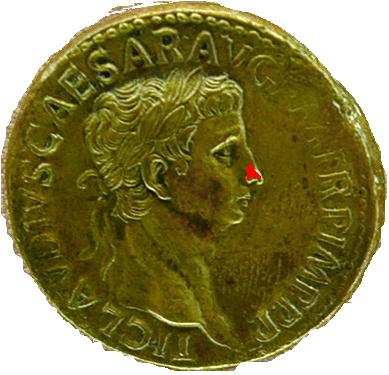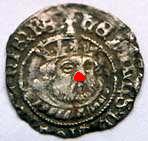
 "It is not very strange; for mine uncle is king of
"It is not very strange; for mine uncle is king of
Denmark, and those that would make mows at him while
my father lived, give twenty, forty, fifty, an
hundred ducats a-piece for his picture in little."
Hamlet, Act II, Scene ii.
| Debasement in Shakespeare's Coinage |

 "It is not very strange; for mine uncle is king of
"It is not very strange; for mine uncle is king of
Denmark, and those that would make mows at him while
my father lived, give twenty, forty, fifty, an
hundred ducats a-piece for his picture in little."
Hamlet, Act II, Scene ii.
This website provides an accessible, nonlinear approach to the recently-published article, "A Picture in Little Is Worth a Thousand Words: Debasement in Hamlet and Measure for Measure."
If you are unfamiliar with Hamlet, you will have little problem accepting the article's premise: that Hamlet's reference to the king's "picture in little" alludes to the fact that the King's picture appears on coinage.
If you are familiar with Hamlet scholarship, you need to keep in mind that none of the editors who have "translated" that line as referring to "miniature portrait" even considered the coinage interpretation. Because the more accepted translation of the phrase is "miniature portrait," the article spends a good bit of time explaining why coinage is the more logical interpretation -- it fits better with Hamlet's character, Claudius's character, Shakespeare's character, and the rest of the play. And it's funnier.
Where does this interpretation lead us? First of all, it converges on other scholarship that has revealed economic themes in Shakespeare's work. And it allows us to pull out other economic references in Hamlet itself: If "picture in little" refers to coins, then surely a later reference to Rosencrantz and Guildenstern "soaking up the King's countenance" is also a reference to coinage; i.e. that they have been bought.
And, most important for dramatic purposes, when Hamlet shows his mother two pictures -- one of Claudius, one of Hamlet's father -- and compares their attributes with terms that resonate with economic imagery -- he is most likely showing her coins. This conclusion is reinforced by the fact that scholars (and directors) have never been able to agree on exactly what sort of "pictures" Hamlet is showing his mother: some say its miniatures, some say its portraits or tapestries, or some combination of these types of pictures. And the various problems with those interpretations have led some to conclude that the pictures must be in the mind's eye. Coins solve all the problems,and fit well with other economic imagery in the scene, in particular, the queen's exclamation "This is the very coinage of your brain."
To understand why coins work so well in both these scenes, it helps to understand the debasement metaphor -- used in literature at least since the time of Aristophanes. A debased, corrupt coin is used to represent a debased, corrupt person. Shakespeare has done it elsewhere, and he does it again in Hamlet.
The prevalence of the debasement metaphor in Hamlet and other plays leads to some startling conclusions about Measure for Measure.
Click on any link to begin.
| THE ARTICLE (in MS Word format) | Shakespeare's Economics | Birdseye View-Hamlet | Birds Eye View- MFM | Layperson Test | THE DISCUSSION |